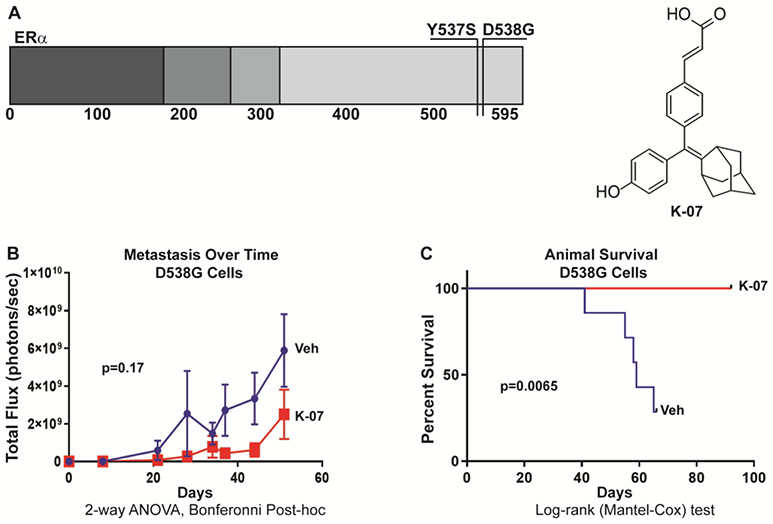Fig. 1.
Mutant ER-containing breast cancer cells and antiestrogen K-07 used in metastasis and host survival studies. (a) Schematic of the human Estrogen Receptor alpha (ER) protein showing the location of the two most common amino acid alterations in mutant, constitutively active ER proteins present in recurrent, metastatic breast cancers and studied in this manuscript (top left). Chemical structure of the adamantyl antiestrogen K-07 utilized in these studies (top right). (b) Metastatic load and (c) animal survival were followed over time. Metastatic load was assessed by bioluminescence after tail vein injection of NOD-SCID-gamma (NSG) female mice with MCF-7 breast cancer cells expressing luciferase and D538G ER. Animals received 0.5 x 106 cells per mouse and were treated 6-times per week with vehicle or K-07 (80 mg/kg orally for 30 days and then 40 mg/kg) and metastatic burden was monitored over time by bioluminescence (IVIS) imaging after luciferin injection, and animal survival was followed to 90 days.

